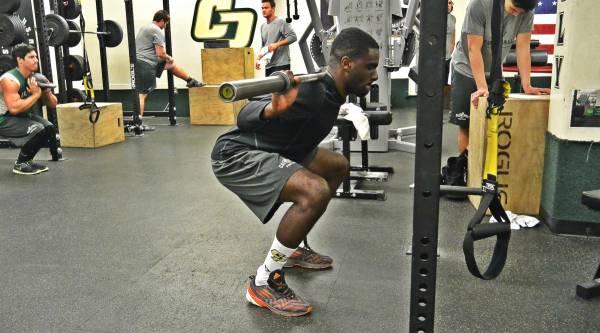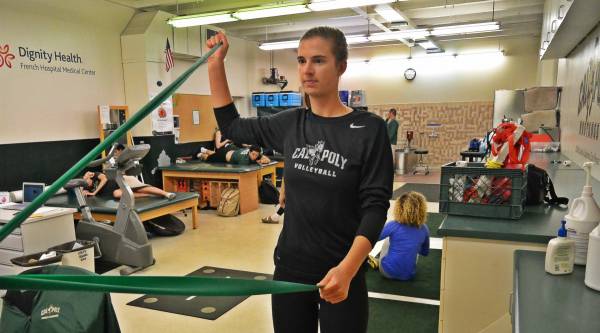Nothing sucks more than having an injury slam the brakes on your momentum in your training. You’ve been progressing with consistency and are approaching PRs in several lifts and then BAM! The dreaded pop or twinge or tear hits like a lightning strike out of nowhere. All that hard training down the toilet, all that time wasted, and all for nothing. Or is it?
There is no better teacher, no better coach, and no better motivator than a big injury. None.
Injuries are something you are going to have to deal with from time to time. But after the depression of losing a season due to injury subsides, many athletes discover a fire in themselves that they never knew existed. The injury becomes a catalyst to greater things. Post injury, athletes often experience levels of success they had only dreamed of before.
Your injury can destroy your mindset and your progress, or it can be the greatest teacher you ever had. The difference is in your approach.
The Good News
Besides something catastrophic like a broken back, neck, or major head trauma, nearly every injury can be worked around. Even quasi-serious injuries like bulging disks, broken bones, and tendon/ligament tears can be navigated so that the athlete does not have to enter early retirement. One of the coolest articles I’ve read on Breaking Muscle is Andrew Lock’s brilliantly written piece about how he rehabilitated a lifter back into shape after suffering from a dreaded spinal injury.
Even if the injury you are managing right now appears insurmountable, a return to what you love is closer than you might think. With some level-headed thinking, a sound game plan, and as much positive thinking as you can muster, you can still have years of healthy training in your future.
Injury Teaches Body Awareness
When it comes to injuries, we can learn a thing or two from martial artists. Something that all martial artists have in spades is body awareness. I’ve been blessed to train the Chinese internal martial arts with one of the greatest fighters in the world, and the level of body awareness I developed over six years of training was uncanny.
Internal martial arts create an extraordinary level of proprioception, or understanding of where the body is in space. When I studied Baguazhang, the practice of bagua circle walking taught me to understand details like the position of my right pinkie toe when I take a step. This level of internal attention creates a high degree of spatial and physical awareness, and sets the stage for an awake fighter.
The only thing that can compare to this level of training is an injury. The pain of an injury can be an incredible teacher. Pain is a message, telling you something is wrong, or reminding you of an old injury and to not make the same mistake again. The vast majority of us don’t have a coach who stands over us, counts each rep, and critiques each and every movement. Pain can be that coach. You have no choice but to listen.

Using your rehab time to become more aware of how your body moves can help you prevent future injury.
Injury Helps You Unlearn Poor Movement
If you are currently managing an injury or have healed from something big, how many of you can attribute it to poor movement? I would venture that most of you can pinpoint the exact moment when the injury happened. A bottomed-out squat position where your pelvis rolled ever so slightly, or a pull where your thoracic spine buckled a few millimeters.
The recovery period is a chance to head back to the drawing board to devote time and energy toward reworking faulty movement patterns. It gives you the opportunity to train bodyweight exercises, and break down movements into individual pieces to analyze how each part functions. Then you can work on making the appropriate fixes, one step at a time.
Rehabilitation can be the most valuable period in your training career.
Dissecting the way you move will likely uncover weaknesses somewhere along the chain. Once you identify the muscle groups that weren’t pulling their weight, you can begin to incorporate the appropriate corrective exercises to those areas to prevent repeat injuries.
We all have weaknesses that we aren’t addressing because we would rather bench or squat. But since you’re sidelined, use the time to fill holes in your game. If you screwed your knee up and need to stay off your feet, train your pulling strength. If you have a low back injury that is keeping you from doing what you want to do, develop your grip strength. There is always something you can do to train around an injury.
Injury Helps You Become a Student
Some of the most educational times in my career were when I was down for the count. I wanted to get back to training as fast as possible, so I studied everything I could find about my injuries. I learned all about back injuries, torn pecs, strained hamstrings, and how to rehab a surgically repaired shoulder. With the endless stream of information at our fingertips, you can become a minor league expert on anything if you take the time.
But don’t rely solely on what you read on the internet. A great coach, physical therapist, or sports medicine professional can provide invaluable information during these times. These folks have dedicated their lives to movement and injury rehab, and you can learn a great deal from them.

Learn everything you can about your injury, both from study and from the professionals treating you.
Tips for Making the Best of Injuries
Dwelling on what you can’t do when you’re sidelined won’t make you heal any faster. These tips will help you make the most of your injury:
- See a professional. Get to a doctor, a physical therapist, or a sports medicine specialist to evaluate the injury right away. Don’t self-diagnose or assume a few days off will fix everything.
- Take time to reflect on what went wrong. Think about how you were moving at the moment of the injury. You may be surprised about what you can recall, and more importantly, pinpoint exactly where the breakdown happened.
- Find a training partner or a coach to evaluate your movement. If you can’t move slowly with impeccable form, you certainly can’t do it quicker under load. Take this time to prioritize the appropriate fixes.
- Learn everything you can about your injury. A sea of information exists on every injury imaginable, so invest some time and read about mechanisms of your injury, common rehab exercises, and ways to bulletproof your body so there is no “next time.”
- Stay positive. Time heals everything. If you need surgery, get it. If you need to take an eight-week layoff, take it. Your body is a remarkable machine and remember, this too shall pass. Get through the low times as fast as possible and make a game plan for a triumphant comeback.
Taking My Own Advice
I wrote this article because I am presently going through it. I have a battered back after years in the trenches as a football player, and I recently entered the electric-shock world of sciatica. At my son’s final flag football game of the season, I sat in a camping chair with my hips considerably lower than my knees for more than an hour. I stood up and haven’t been the same since. But guess what? I’m planning the biggest comeback of all time.
An injury is not the end of the world, but chances are you got lucky this time. A bigger, nastier injury is on the horizon if you don’t sort out your poor movement issues. Get the help you need and identify where your movement is breaking down so you can solve the problem once and for all.
More Tips on Dealing With Injury
- The Mental Side of Injury: How to Adapt and Overcome
- Healthy Healing: Nutrition for Surgery Recovery
- 5 Injury Prevention Exercises to Build Bulletproof Athletes
- New on Breaking Muscle Today
Photos courtesy of Chris Holder.






